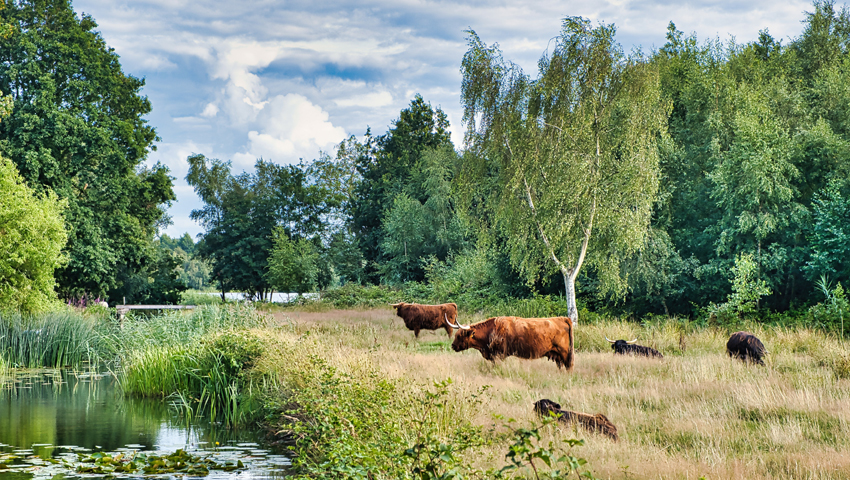“It seems that we had lots of herbivores around during the last million years, meaning that herbivory is not only not such a bad thing – but a process that is needed in most terrestrial ecosystems in order to sustain biodiversity and ecosystem function.”
Pablo Manzano, lead author, Underrated past herbivore densities could lead to misoriented sustainability policies
A PAPER by Spanish and Finnish researchers concludes that current assumptions about past herbivore densities substantially underestimates historic numbers of herbivorous mammals. They say that this has significant implications for sustainability policies.
In their paper (Underrated past herbivore densities could lead to misoriented sustainability policies, which was published in Nature, Biodiversity) the researchers say that estimating the total carrying capacity for herbivores in the Earth’s terrestrial ecosystems is a key question. It affects multiple fields of sustainability science, including the transdisciplinary fields of sociology, economic and environmental sciences where herbivore density affects ecology, climate science, and agronomy.
They say, “Knowing the potential herbivore pressure is important to establish livestock loads that preserve habitat integrity and avoid land degradation or biodiversity loss.”
They note that standard estimates of existing herbivore levels tend to be that they are “four to five times larger than at the Pleistocene–Holocene transition or the start of the industrial revolution”. They say that “this estimate can lead the general public and the scientific community to predict severe, widespread environmental impacts by livestock in terms of deforestation, biodiversity loss, and climate change.”
However, this “ignores the inherent uncertainty of such calculations.”
The researchers “revise the evidence published during the last decade regarding Late Pleistocene herbivore abundance, along with contemporary and some pre-industrial data on herbivore density in grazed ecosystems.
“Both Late Pleistocene and pre-industrial herbivore levels are likely to be consistently higher than what has generally been assumed, confirming increasing awareness on the importance of herbivory as a widespread ecological process.”
They say that the information reviewed in their paper points to herbivore density being way below natural levels in protected areas outside Africa, and they point to research that shows a more important role for herbivores in shaping the Earth’s ecosystems, both in terms of extent of grazed ecosystems, and of higher natural herbivore densities.
“A more accurate consideration of both factors”, they say, “can improve the quality of ecological restoration initiatives both in terms of assuming the real role of herbivores in natural habitats and in not overspreading closed-canopy forests. Nuancing such insights has important implications, e.g. for assumptions of wilderness areas and whether defaunation by humans may have affected their primeval state, or for calculating the potential capacity of carbon fixation by forests, which may be overstated and may lead to reconsidering calls for afforesting grazed areas.”
Lead author, Pablo Manzano said, “For many reasons, it’s important to know natural herbivore abundance. Back in 2008, Anthony Barnosky had proposed a first estimate on how much herbivore was naturally populating Earth. He was not intending to close the issue – rather trying to open a debate that is very relevant for understanding and managing ecosystems.
“Yet many have since then taken such estimate as written in stone, neither really understanding the scientific method (subjected to constant validation) nor reviewing evidence published later.
“But the last decade has been fertile in this field, and we were lucky to spot studies for all biomes under the umbrella of William J. Bond’s Open Ecosystems (University of Cape Town), where there is evidence for high (≥ 10 tons/km²) herbivore densities, tropical & temperate, and also boreal. Sergei and Nikita Zimov have proven the same dynamics and herbivore densities in areas not yet included in such Open Ecosystems, but with great functional similarities.
“In summary, it seems that we had lots of herbivores around during the last million years, meaning that herbivory is not only not such a bad thing – but a process that is needed in most terrestrial ecosystems in order to sustain biodiversity and ecosystem function.
“And how do we maintain it in a world that has lost most of its munching giants? In the last thousands of years we seem to have been doing pretty well with livestock. Yet now we have unbalanced herbivory by having too much in some places, and too little in some others. How to know? Densities per km² a good clue, but herbivores tend to migrate. This is why mobile livestock, which doesn’t need much inputs and mimics the natural behaviour of wild herbivores, seems a good idea.”
The paper concludes that “It is important to nuance the ecological function of domestic herbivores when reintroduction of wild herbivores for ecological restoration is economically or socially unfeasible. The ‘intermittent nature of herbivory in natural systems’, mentioned as a key factor for maintaining sustainability of grazing, is also present in mobile pastoralist systems.
“[Herbivores] provide important functions in terms of tree regeneration, seed dispersal or pollinator facilitation while achieving higher productivity than sedentarised systems, yet they constitute a dwindling system due to inadequate policy and legislation.
“Conversely, the current trend towards intensification of livestock production in high-income countries that rural development policies in low-income countries also aim for, results in under-grazed landscapes that are prone to biodiversity loss and to wildfires, as well as in severe impacts related to high livestock densities in intensified farms.”
